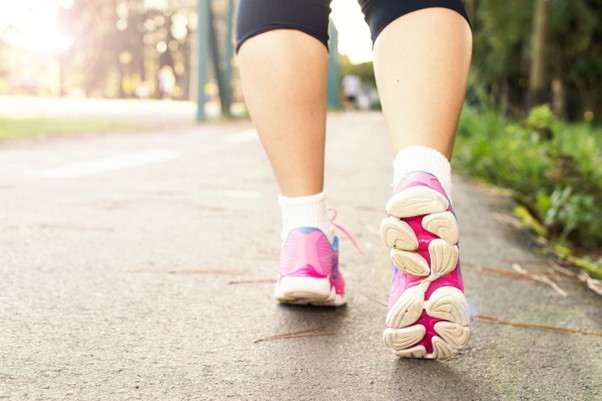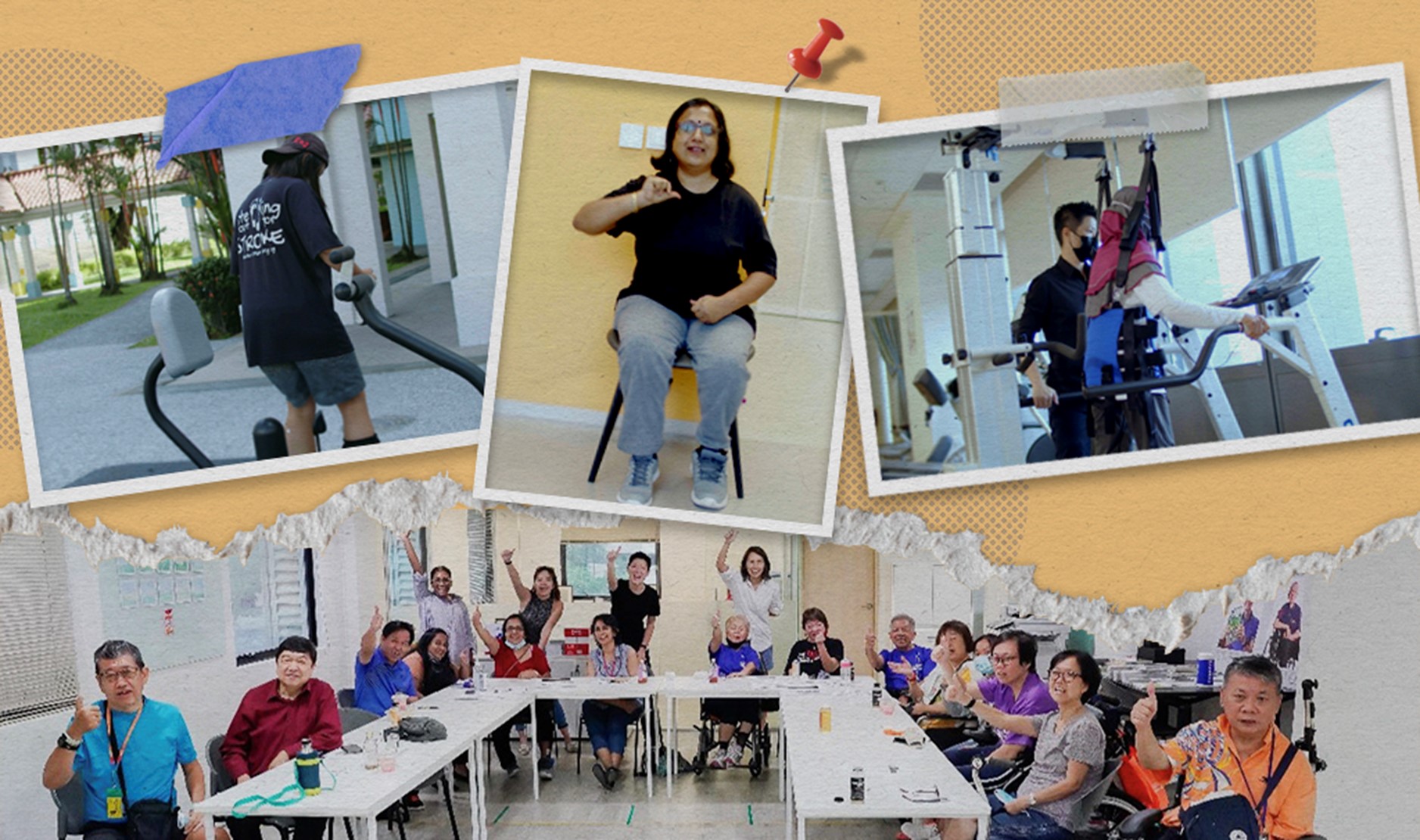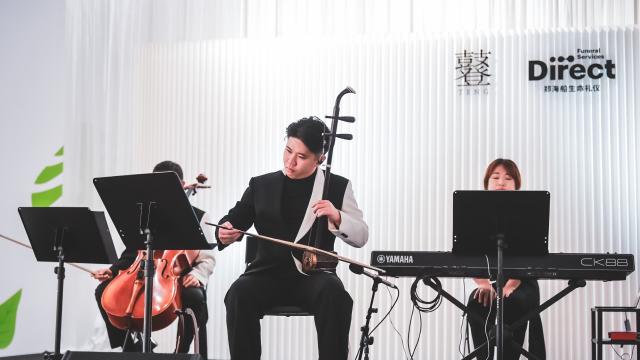
Co-designed with stroke survivors, MOTIVATE is a multisector collaborative initiative for stroke recovery led by the Singapore Institute of Technology. (Photo: The Asian Scientist)
One in four adults over the age of 25 will have a stroke in their lifetime, according to the World Stroke Organisation. The organisation also estimates that over 110 million people worldwide have had a stroke. Stroke ranks as the second-leading cause of death globally, and its impact on survivors can be profound. Many individuals who survive a stroke are left with severe and debilitating consequences, often experiencing physical disabilities such as impaired speech and movement.
Staying physically active is beneficial for stroke recovery, but research has shown that many stroke survivors do not meet the recommended level of physical activity. In Singapore, a study found that stroke survivors typically achieve a median of 4,870 steps per day, falling below the recommended minimum of 6,500 to 8,500 steps.
Associate Professor Kwah Li Khim— Director of Programmes, Health & Social Sciences at the Singapore Institute of Technology (SIT) — suggests that this issue may stem from the limited availability of external resources and barriers to access to public facilities, such as gyms and swimming pools, to support stroke survivors in engaging in physical activity.
It is crucial to recognise the factors that restrict the ability of stroke survivors to engage in physical activity. In their study, Associate Professor Kwah and her research team interviewed a group of stroke survivors in Singapore to identify the barriers affecting their participation in physical activities. The study revealed that the primary obstacles faced by stroke survivors were the absence of suitable programmes and inadequate assistance provided at fitness centers.
“In our interviews with stroke survivors, we found that environmental context and resources availability played a vital role in determining their participation in physical activity. Factors such as access to public facilities, the availability of suitable equipment and the presence of physical assistance were crucial. When these elements were lacking, stroke survivors were less likely to engage in physical activity,” she explained.
This study served as the basis for the development of MOTIVATE, a multi-modal training programme to promote physical activity after stroke, spearheaded by SIT. Launched in 2019, MOTIVATE is the collaborative brainchild of multiple organisations, including SIT, Singapore National Stroke Association (SNSA), Singapore General Hospital, National Neuroscience Institute and Republic Polytechnic. It is a dedicated stroke recovery programme co-designed with inputs from stroke survivors, their caregivers and a diverse team of medical, health and fitness professionals in Singapore.
MOTIVATE aims to empower stroke survivors to take charge of their physical fitness by providing them with the necessary skills, knowledge and resources. The ground-up approach to developing MOTIVATE alongside stroke survivors with physical disabilities strengthens the value proposition of the project and reflects SIT’s quintessential focus on industry collaboration. Working closely with stroke survivors during the planning and design stages increases the likelihood of the programme achieving its intended outcome.
“We wanted to develop a programme that was effective and practical in the real world. In research, we often encounter two common problems: treatments that are either ineffective, or effective but not feasible to implement. These issues typically arise when researchers fail to engage with stakeholders to understand their needs before designing interventions. With MOTIVATE, we took a proactive approach to ensure we started on the right track,” shared Associate Professor Kwah.
One of the notable initiatives developed through MOTIVATE in aiding stroke recovery is STRIVE. Presenting a wealth of information, STRIVE is an aphasia-friendly website developed by stroke survivors in consultation with medical professionals. Many individuals may suffer from aphasia after a stroke, affecting their cognitive functioning, such as the ability to communicate with others. STRIVE is a platform they can access and feel empowered to get their lives back on track. It houses videos, articles, resources and expert advice to help stroke survivors find ways to stay physically active and enhance their quality of life. For instance, there are tutorials demonstrating the right way to exercise and even web links to dental services catered to individuals with disabilities.

MOTIVATE has resulted in an aphasia-friendly website and a SNSA-led programme that assisted and empowered stroke survivors to engage in more physical activities. (Photo: Kwah Li Khim)
MOTIVATE also introduced a programme called ‘Sweat, Smile and Repeat’, organised by SNSA. A physiotherapist would be present at two ActiveSG gyms deemed most accessible by the research team to prescribe exercises and help stroke survivors with gym equipment. In a post-programme survey, over 80 percent of stroke survivors reported feeling more confident exercising regularly and using gym equipment after participating in the programme. This outcome highlights the positive impact of the programme in empowering stroke survivors and fostering their confidence in engaging in physical activities.
The STRIVE website and the ‘Sweat, Smile and Repeat’ programme mark the initial achievements of MOTIVATE. About 50 stroke survivors participated in various parts of the two-year multi-modal training programme and contributed by answering surveys and interviews, suggesting content and recommending resources for STRIVE.
Associate Professor Kwah acknowledges that the full programme is complex, especially when the aim is to initiate and sustain behavioural changes in stroke survivors. Moving forward, the research team plans to put to the test new strategies for behavioural changes, focusing on their effectiveness and implementation. The team's long-term goal is to replace maintenance therapy at day rehabilitation centres and create a more inclusive Healthier SG model.
As Singapore’s dedicated programme for stroke survivors designed by stroke survivors, MOTIVATE is ultimately focused on inclusivity. The overarching aim is to ensure stroke survivors have access to the same opportunities for physical activity as the able-bodied population. The programme aligns with the objectives of national initiatives like Healthier SG, focusing on preventive health so that Singaporeans can take proactive steps to manage their health, prevent the onset of chronic diseases and have strong support to lead healthier lifestyles.
“The bigger goal of MOTIVATE is to ensure equitable access for stroke survivors to physical activity opportunities. It should not be hard for stroke survivors to access public facilities like gyms and swimming pools in order to be physically active. They should feel confident when visiting a gym or swimming pool, without worrying about getting on/off gym machines or in/out of the pool,” said Associate Professor Kwah.
For more information on MOTIVATE and its related research and initiatives, contact Associate Professor Kwah Li Khim here.
This article first appeared in Asian Scientist Magazine online.















![[FA] SIT One SITizen Alumni Initiative_Web banner_1244px x 688px.jpg](/sites/default/files/2024-12/%5BFA%5D%20%20SIT%20One%20SITizen%20Alumni%20Initiative_Web%20banner_1244px%20x%20688px.jpg)


